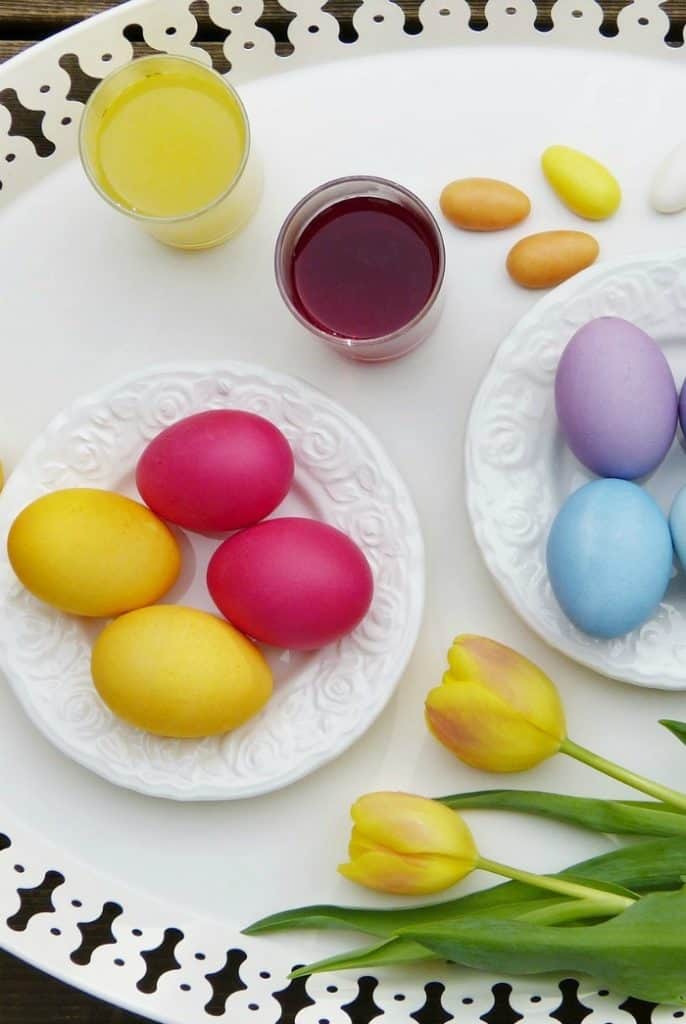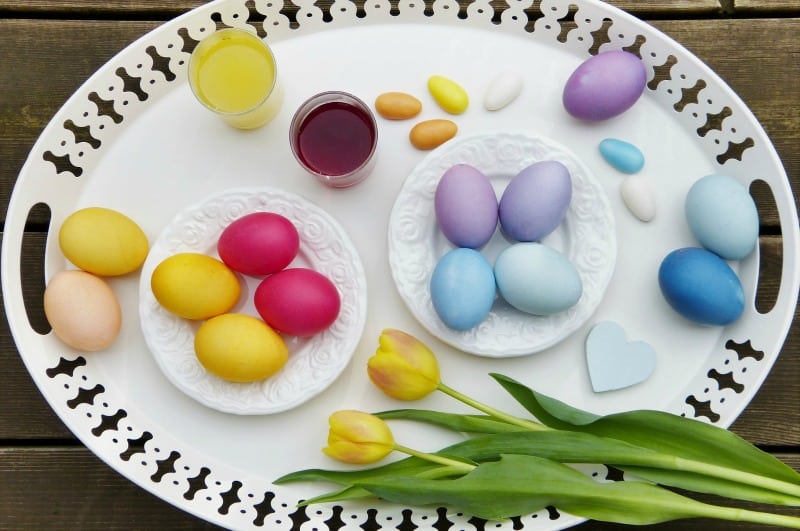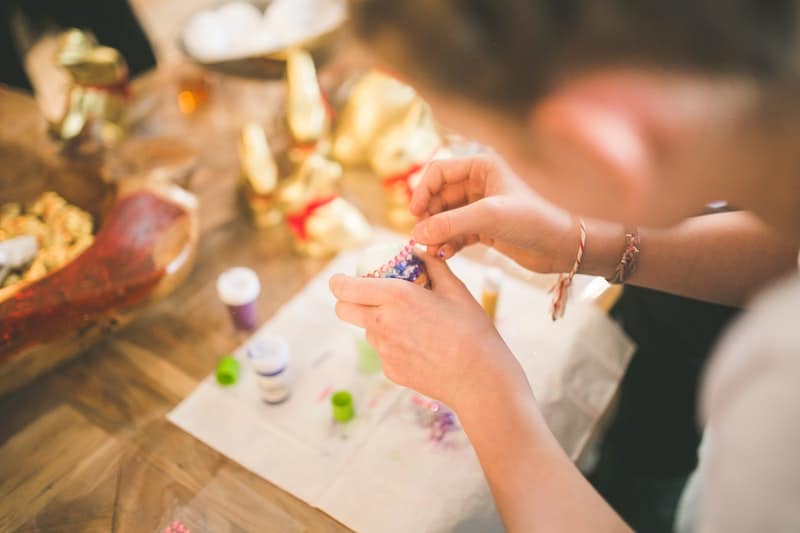Last Updated on September 14, 2021 by Ellen Christian
Are you looking for frugal and eco-friendly Easter eggs? I know that for many people Easter means coloring eggs with the dye kits you get at the store. They can certainly be purchased relatively inexpensively but they aren’t the healthiest choice for eggs you want to eat.
Posts may be sponsored. This post contains affiliate links, which means I will make a commission at no extra cost to you should you click through and make a purchase. As an Amazon Associate I earn from qualifying purchases.
Of course, we all want to enjoy pretty Easter eggs and have fun dying them with the kids. Like many children, my kids love to dye Easter eggs each year. That’s one of our Easter traditions that I really enjoy and even though my kids are 12 and 16, we still do that.
Eco-Friendly Easter Eggs
In the past, we have just grabbed one of those boxes of Easter egg dye kits and used it to dye eggs. I always worried about eating the eggs when we were done dying them though. Somehow chemically enhanced neon purple Easter eggs just didn’t appeal to my sense of healthy foods. Did you know you can use safe eco-friendly dyes from foods you have around the house to dye your eggs?
It’s really very simple. Here’s what you do.
- Get white eggs – preferably farm fresh and organic if you can do it on your budget.
- Place the eggs into int of cold water. Use just enough water to cover the eggs.
- Add one tablespoon of white vinegar.
- Add one of the coloring items listed below.
- Boil for 15-20 minutes.
- Remove. Cool and refrigerate when done.
Yes, you do need to boil each batch of eggs in different water if you want a bunch of different colors. The longer you leave them in the dye, the brighter the colors will be.
How can you make Easter eggs eco friendly?
Why not try these natural dyes?
- Purple: Grape juice (don’t use water with this – just juice in the pot)
- Yellow: Turmeric (3 tablespoons)
- Green: Fresh spinach leaves
- Pink or light purple: Sliced beets
- Brown: Strong black coffee (again no water)
- Orange: Yellow onion skins
- Red: Pomegranate juice
What can I use instead of plastic Easter eggs?
Give it a try this year instead of using traditional Easter dye kits. You’ll be impressed by the beautiful colors. Of course, you do not need to dye eggs to decorate them at all. Here are a few other natural ways to decorate Easter eggs to have an eco Easter.
- Draw on the eggs using crayons.
- Let the children add stickers or sequins.
- Blow out the eggs and decoupage them
- Buy reusable Easter eggs. These are eco-friendly.
- There are many alternatives to plastic Easter eggs including hollow wooden eggs. Wood fillable Easter eggs are an easy way to avoid plastic.
How that you’ve made your Easter eggs and have eggshells, check out the video above for some fun eggshell crafts. Why not try my gluten-free Easter pie if you have extra eggs. If the kids want another fun Easter craft, why not make these easy felt Easter bookmarks. How do you make eco-friendly Easter eggs?

Ellen is a busy mom of a 24-year-old son and 29-year-old daughter. She owns six blogs and is addicted to social media. She believes that it doesn’t have to be difficult to lead a healthy life. She shares simple healthy living tips to show busy women how to lead fulfilling lives. If you’d like to work together, email info@confessionsofanover-workedmom.com to chat.



